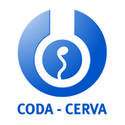In short
The number and the amount of consumer goods and applications on the market using nanotechnology are rapidly increasing. At the European level, more transparency and traceability regarding the use of nanomaterials in consumer goods is needed to protect human health. In this perspective nanomaterials used in food and consumer goods must be labeled in the list of ingredients with the word “nano” according to recent European legislation. Furthermore, the use of nanomaterials in food, food packaging material or cosmetic products must be authorized prior to their placement on the market, which implies the conduct of a safety assessment. In both contexts, there is a need for reliable methods to detect and characterize nanomaterials. The aim of the project is to validate the detection and quantification of two nanomaterials based on two different techniques.
Project description
In order to create validated methods for the detection and characterization of nanomaterials in food and consumer products, the Service Trace Elements and Nanomaterials of Sciensano already created –prior to the start of the NANOVAL project- two validated methods for respectively: i) the analysis of gold and silver nanomaterials by single particle ICP-MS and ii) quantitative Transmission Electron Microscopy (TEM) analyses for near-spherical, near-monomodal reference materials and representative test materials. To further complement the characterization studies, a Dynamic Light Scattering (DLS) device was purchased for which methods have to be validated. In this perspective, the aim of this project is to validate DLS and single particle ICP-MS for the nanomaterials titanium dioxide (TiO2) and cerium oxide (CeO2).
Single particle ICP-MS measures the mass of individual inorganic particles, from which a diameter can be calculated assuming a certain shape of the particles (e.g. mass equivalent spherical diameter). Dynamic Light Scattering measures the hydrodynamic diameter of particles and expresses it as diameter of a spherical particle that has the same Brownian motion behavior in suspension. Quantitative TEM analysis will provide information about the size and shape of the primary particles and their aggregates. This information allows a better interpretation and refinement of the particle size calculation, based on hydrodynamic diameter (DLS) and mass (SP-ICP-MS).
The project includes the development of dispersion and dilution protocols in order to prepare dispersions from the powder samples that are suitable for the different techniques, optimization of the measurements and validation.
The validation studies demonstrate that DLS is a precise technique to determine the hydrodynamic diameter of monodispersed samples of TiO2 and CeO2 (nano)particles. The high accuracy of the technique is also demonstrated for colloidal dispersions of silica nanomaterials. Single particle ICP-MS is a precise technique to determine the mass-equivalent spherical diameter of TiO2 and CeO2 (nano)particles and their number distribution. The accuracy of the technique cannot be demonstrated yet for these materials as no certified reference materials are available. Both techniques should be validated further to test their fitness for purpose to detect and quantify TiO2 and CeO2 (nano)particles in complex matrices such as food or consumer products for regulatory purposes.
Sciensano's project investigator(s):
Service(s) working on this project
Partners




